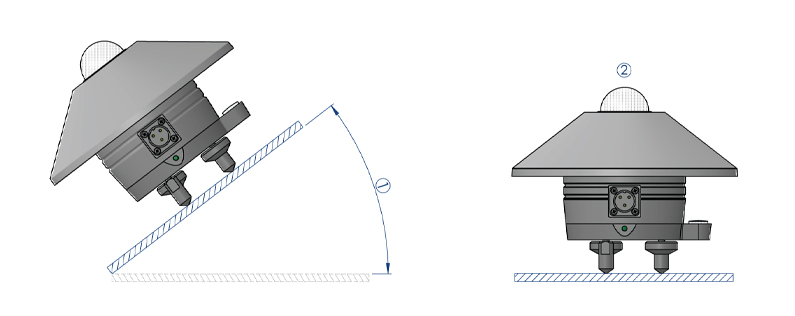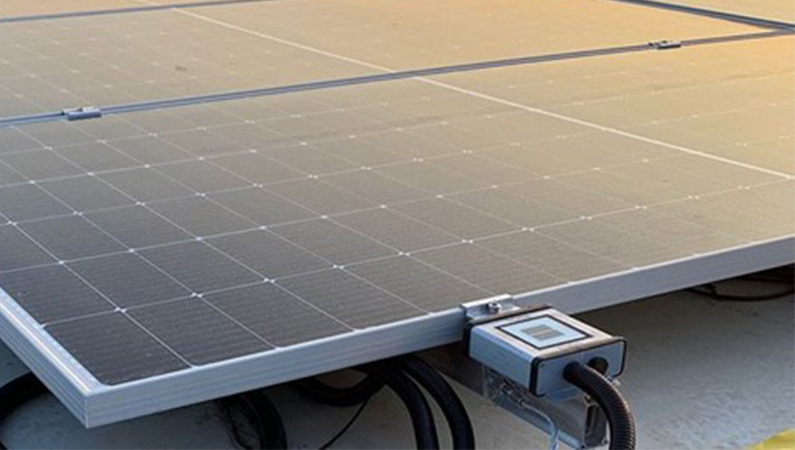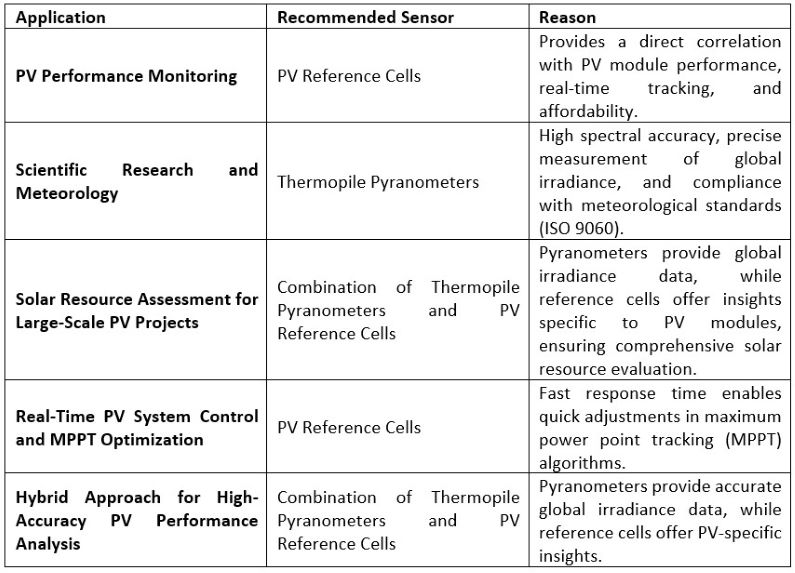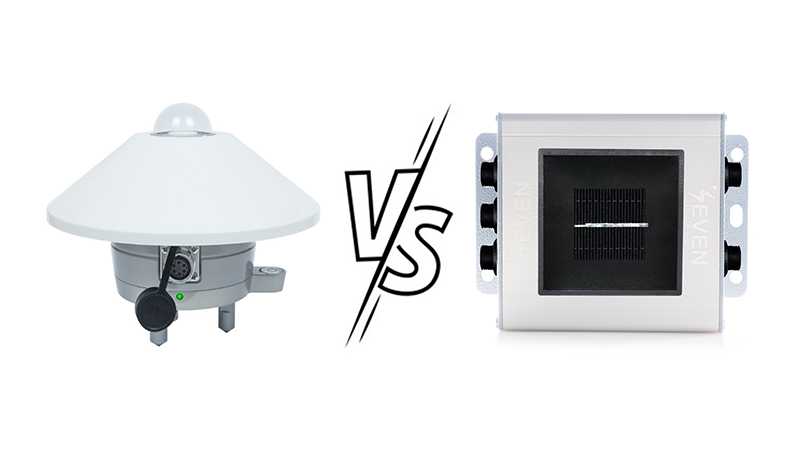Accurate measurement of solar irradiance is crucial for monitoring solar energy and photovoltaic (PV) systems. Thermopile pyranometers and PV reference cells are two commonly used devices for this purpose. Although both are used to measure solar irradiance, they differ in their measurement principles, accuracy, response time, and applications. Understanding these differences is essential to choosing the right instrument for specific use cases.
Thermopile Pyranometers
Thermopile pyranometers are radiometric instruments designed to measure broad-spectrum solar irradiance. They operate by detecting temperature differences between a black coated sensing surface and a reference point. This temperature gradient generates a voltage signal proportional to the incoming solar radiation.
These instruments are designed to measure the global horizontal irradiance (GHI) and provide accurate, spectrally flat measurements that cover a wide range of wavelengths, typically from 285 nm to 3000 nm. Their performance is not affected by the spectral variations of sunlight, making them suitable for meteorological applications, PV performance assessment, and scientific research.
However, thermopile pyranometers have a slower response time compared to reference cells due to their thermal response mechanism, pyranometers typically have a response time in the range of seconds to minutes. Pyranometers require regular calibration to maintain accuracy. Additionally, they do not measure irradiance in the plane of an actual PV module unless installed at the same tilt angle.

PV Reference Cells
PV reference cells, also known as Irradiance sensors, are silicon-based sensors that mimic the response of a PV module. They measure irradiance by converting sunlight into an electrical current, similar to how PV panels generate electricity. The measured output is calibrated to represent the short-circuit current of a standard PV cell, making it a direct reference for PV system performance.
Unlike thermopile pyranometers, reference cells have a faster response time and are more robust for field applications. A key advantage of reference cells is the fact that they measure Plane of Array (POA) irradiance, which represents the sunlight received at the exact tilt and orientation of the PV modules. This makes them the relevant sensors for PV performance monitoring and performance ratio calculations.
However, their spectral response is limited to the range of silicon solar cells – approximately 300 nm to 1200 nm– which means their accuracy is affected by changes in the spectral composition of sunlight. Factors such as cloud cover, air mass, and atmospheric conditions can generate measurement deviations.
The reference cells are the ideal solution for PV system monitoring and performance ratio calculations since ideal for PV system monitoring and performance ratio calculations since they measure the irradiance received by PV modules.
PV reference cells are classified under IEC 61724-1:2021 standards for photovoltaic reference devices, ensuring traceability to international calibration procedures.

Which Instrument is Recommended for Which Application?
The choice between thermopile pyranometers and PV reference cells depends on the application requirements:

Both thermopile pyranometers and reference cells have their unique advantages and are suitable for different applications. If the purpose is solar irradiance measurement with minimal spectral bias, thermopile pyranometers are the best choice. However, for direct PV performance monitoring and real-time applications, PV reference cells provide a cost-effective and practical solution.
The good news is that SEVEN Sensor offers both thermopile pyranometers and PV reference cells, ensuring you have the right tool for your specific solar measurement needs.
PV reference cell * Irradiance sensor*: https://www.sevensensor.com/irradiance-sensor-with-modbus-rtu-output
Thermopile Pyranometer: https://www.sevensensor.com/pyranometers
